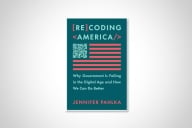You have /5 articles left.
Sign up for a free account or log in.
With The Boy in the midst of his college search -- so far 6 acceptances, 1 deferral, and 1 yet to report -- I’m becoming fluent in the difference between “tuition and fees” and “total cost of attendance.” The latter figure, which includes everything except opportunity cost, is the one that matters. It’s what we actually have to figure out how to cover. In nearly every case, of course, the published COA is otherworldly and insane; I’m looking at COA after whatever grants are applied. But still, what matters from here is not how the bill is broken out, but what the bottom line is.
I don’t think my family is unique in that.
That’s where wide adoption of Open Educational Resources (OER) can be an institutional survival strategy.
Let’s say -- bear with me on this -- that your college is facing increasing costs of provision, but its public support is persistently flat. That creates an ever-widening structural gap. And let’s further say that you have an institutional mission of access, so you don’t just want to pass along the entire widening gap to students. Obviously, you look to alternative revenue sources, such as public-private partnerships and increased philanthropy, but both of those take time to cultivate and may take a while before they start to bear fruit at sufficient scale to make up the difference. And you’ve already cut so much over years of sustained austerity that you can’t make it all up that way. What do you do in the meantime?
Shift focus from “tuition and fees” to “total cost of attendance,” and foster the adoption of OER at scale. Money not spent on textbooks can offset tuition increases from a student perspective, while still allowing needed operating revenue to flow to the institution.
In the right context, done well, OER represents the rare win-win. A student facing a tuition increase of, say, a hundred dollars a semester probably breaks even with a single course moving to OER, and comes out ahead if two or more courses do. Tuition may go up, but total cost of attendance -- the meaningful number -- remains flat or even drops. Even better, OER allows every single student to have the book from the first day of class, which can help with course completion and retention, and therefore enrollment. (One of the most powerful predictors of retention is GPA. Students with GPA’s below 2.0 drop out at much higher rates than students above 2.0. Not having the book affects academic performance; presumably, having the book may affect it in a positive way.) You can maintain a sustainable funding level for the college, keep costs down for students, and improve retention rates at the same time.
In essence, it redirects revenue from publishers to colleges and students. Yes, that takes a bite out of some commercial publishers, but that’s their problem. They should have thought of that before charging $300 for an Intro to Physics textbook, or before bundling non-transferable software codes with textbooks to short-circuit the used book market.
OER is neither instant nor free. Faculty need time and support to research, compile, and sometimes even create material that works for them. But especially in a community college context, where most of the courses are at the 100-level, I don’t see why we can’t try it. Intro to Algebra is neither proprietary nor idiosyncratic. Intro to Psychology is taught to millions of students every single year; surely, there are common denominators to it. Publishers like to try to scare faculty with lines like “OER is free like a puppy,” but that’s overstated; after the initial selection process, it’s not that bad. (In fields like math, where the real issue is homeworks and problem sets, some publishers have opened up platforms online that assume the presence of an OER textbook. It’s impure, but I’d rather a student pay $25 for that than $100 for a book and code.)
I ran some back-of-the-envelope numbers for Brookdale over the last few days, to see how much money OER has saved or will save students in the coming year. Based only on courses that have already committed to adopting it, we’re looking at over a million dollars per year in textbook cost savings. For self-paying students, that’s money they keep; for students on Pell, that represents larger refunds with which they can cover transportation and food. And that’s only a start; we have more courses that would easily lend themselves, some of which are already experimenting on a section basis. For example, we have a chemistry class with a $125 textbook and a $50 lab manual that it switching to OER this Fall. A student there will save far more from the move to OER than she will spend in increased tuition, and she’ll have the luxury of not having to worry about buying the book.
Obviously, I’d much prefer for institutions to be sufficiently well-funded that we didn’t have to make these tradeoffs, and students could enjoy the entire benefit of OER. I hold out hope for a political sea-change that will allow such a world to happen. But until then, I’d rather move to OER in some more classes than go with layoffs, or pass even higher increases in cost of attendance on to students. Because those are the actual choices at hand.



